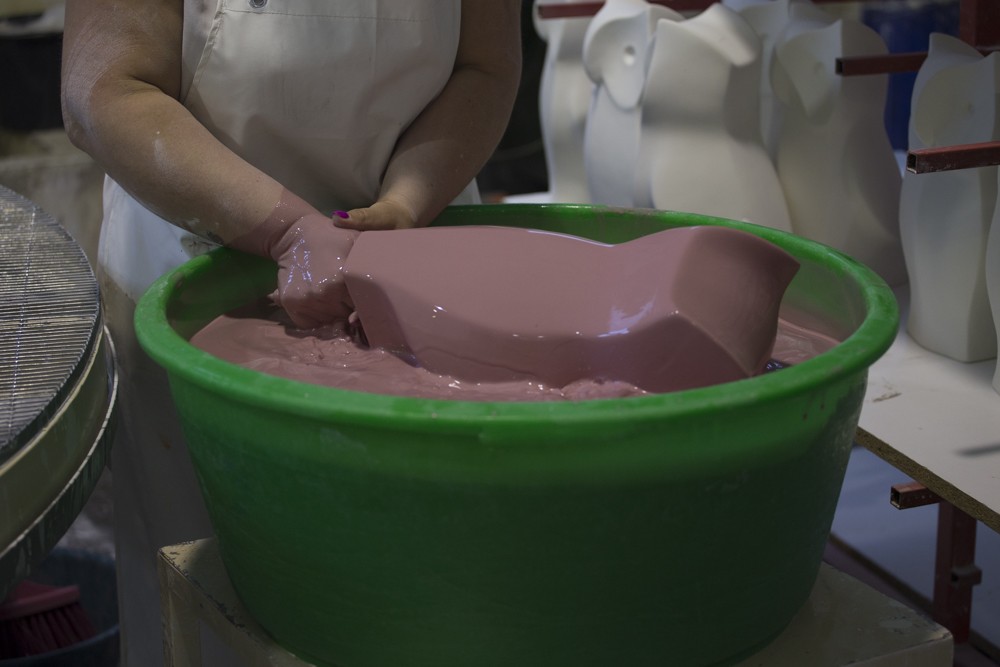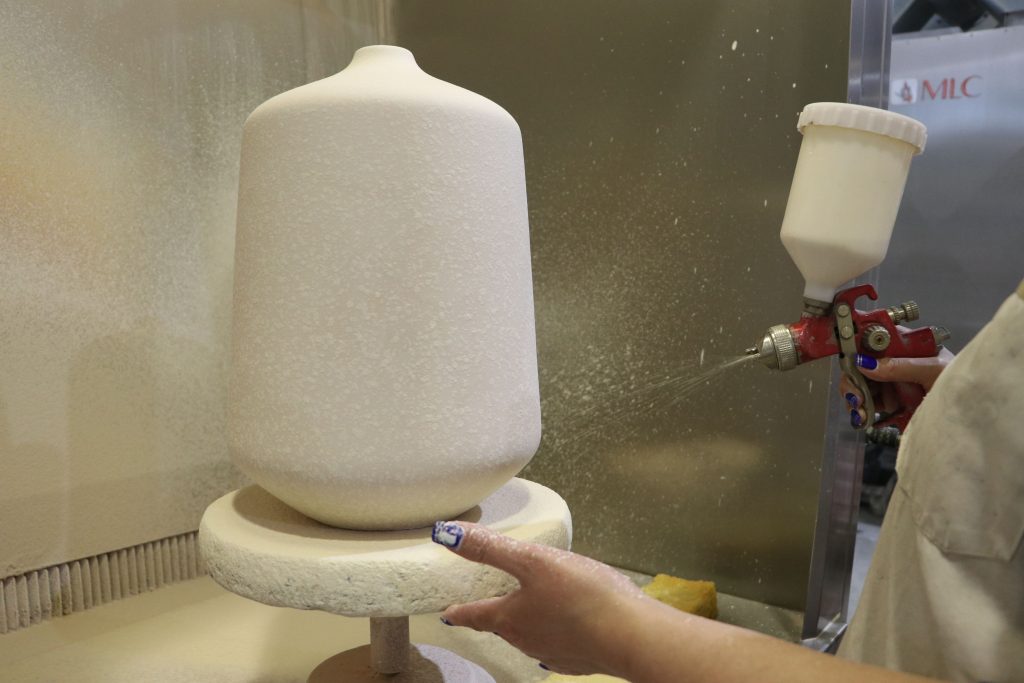Ceramic glazing is nothing more than the act of fusing glazes with a ceramic body through fire to achieve certain decorative purposes.
Now what exactly is a glaze? A glaze is like a glass coating and it can be glossy, matte, translucent, opaque, smooth and textured. The combinations are endless, all you have to do is test different compositions.
A good ceramic glazing begins with a proper biscuit, well fired and clean, which is basically the state of ceramics after the first firing, required to harden the clay and consolidate its shape.
Before the ceramic glazing, during the first firing, be aware that porcelain and stoneware can’t be fired at a too high temperature in order to maintain some porosity (since they are inherently watertight), allowing the glaze to penetrate the porous properly. Earthenware, which is the type of clay we work with, has a more porous composition and is not naturally watertight, so it easily absorbs the glaze.
After the first firing, we glaze the ceramic pieces using different methods. Our favourite methods are:
Dip glazing

Dip glazing is one of the fastest methods. It gives an even coating of glaze and is generally very useful when you have a large quantity of pottery that uses the same glaze. It’s normally used together with glaze pouring for the inside.
Glaze spraying

Glaze spraying is a more complicated process. There are many factors involved that require some experience in order to do a good job. If you want to achieve certain decorative and esthetical purposes, glaze spraying is a requirement, even though it’s not a method as efficient as dip glazing in terms of time and resources.
After the glazing, we fire the pieces again for a second time, and depending on the properties of the glaze used, it might or might not turn the ceramic pieces watertight. (again, we’re talking about earthenware here. Porcelain and stoneware are inherently watertight). We normally use a water repellent to make them watertight and this is the final result.

Comments are closed.